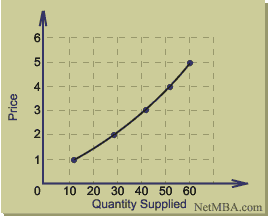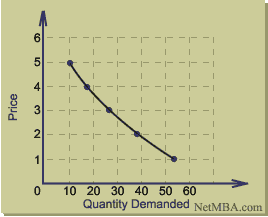It has come time to abstract away from the current economic crisis plaguing the United States and turn our attention instead to the theoretical understanding of the most important laws of economics, the laws of supply and demand. Without literacy in economic theory, analysis of current events becomes impossible, therefore, from time to time, I expect I will cover many dimensions of pure theory in future articles. While these discussions will be relatively fewer than those concerning current issues, they are extremely important in the education of any up and coming economist.
The laws of supply and demand are widely cited but very rarely understood on a fundamental level. Most importantly, supply and demand are the forces responsible for the existence of prices. The laws yield this outcome through what we call an "auction" process, in which the two forces of supply and demand interact to create a mutually agreeable price.
Imagine that you are a car salesman and that you specialize in selling high end sports cars. When given the chance, it is obvious that you would always accept a higher price for your goods. If you say to a customer, "That car is $50,000", and the customer responds, "I'll give you $100,000", you might want to sell that person more cars wouldn't you? Formally stated, the law of supply states that there is a positive relationship between price and quantity supplied of a good. Graphically, a supply curve looks like as follows.

(Image from netmba.com)
Now, how does one determine a price from the above graph? Were it up to the car salesman the price would tend off to infinity. But this is obviously not the case, finite prices do exist, we simply cannot yet derive them because the above graph neglects the law of demand which is the other half of the price equation. The law of demand is simply the inverse of the law of supply. If you are a buyer looking for a high end sports car, you want to pay as little as possible because that is in your interest. If you say to the salesman, "I'll give you $50,000 for that car", and the salesman says, "You can have it for free", you would certainly purchase many cars from that salesman. Formally, the law of demand states that there is a negative relationship between price and quantity demanded of a good. Graphically, that law of demand is thus.

(Image from netmba.com)
With both supply and demand understood, the origin of prices becomes obvious when both laws are accounted for graphically.

(Image from tatulln.wordpress.com)
The space at which the two curves intersect is of utmost importance, for that particular spot is the point at which both buyers and sellers of a given product desire to execute a transaction. At this point, known as the "equilibrium point", the market will clear, meaning that producers produce exactly as much as consumers want to buy. So, in keeping with the above hypothetical example, if a market is in equilibrium then the buyer will want one car and the dealer will want to sell one at a price of $50,000. If the price were above the equilibrium point, the seller would want to sell more than one car but the buyer would not want to buy even one, leading to a surplus or a higher quantity supplied than demanded. Conversely, were the price to be below the equilibrium level then the seller would not want to sell as many cars as consumers would like to purchase, leading to a shortage or a higher quantity demanded than supplied. Such effects are illustrated below.

(Image from www.easonline.org)
It is through the auction process that the two conflicting laws of supply and demand yield harmony. Free markets are essential in that they lead to efficient outcomes through facilitating the auction process; without a system which leads to agreement between sellers who want an unlimited amount of money and buyers who want to pay nothing for a product there would only exist terrible shortages of desired goods or hindering abundances of undesired goods. Such was the reality of the former soviet empire in which the communist government attempted to set prices independently of market forces. The result of the government's effort to "make food affordable" by lowering the price artificially was to incentivize producers to produce little and to incentivize consumers to consume much, in other words, a shortage.

(Empty Russian grocery store, image from newsimg.bbc.co.uk)
It is tragic to think that suffering such as this might have been avoided were it not for the arrogance of socialism. Bureaucrats regulating the food industry in the Soviet Union believed themselves to possess more knowledge than an entire market which is only the amalgamation of countless thousands of individuals. Because they believed that they could name a better price than the auction system stemming from the free market, Russian officials doomed many of their citizens to starvation. It is necessary that even the most elementary laws of economics be understood by public servants of all nations; without comprehension of supply and demand the creation of sensible policy becomes dramatically impeded. Prices are real, they exist, and economic truth is elusive to say the least when they are ignored.
Lesson 5 Preview: Free speech or verbal assault?
